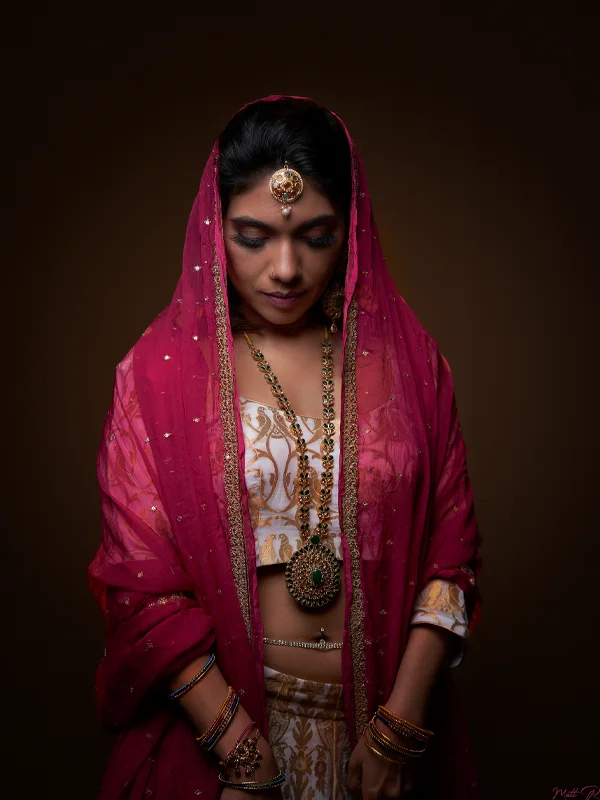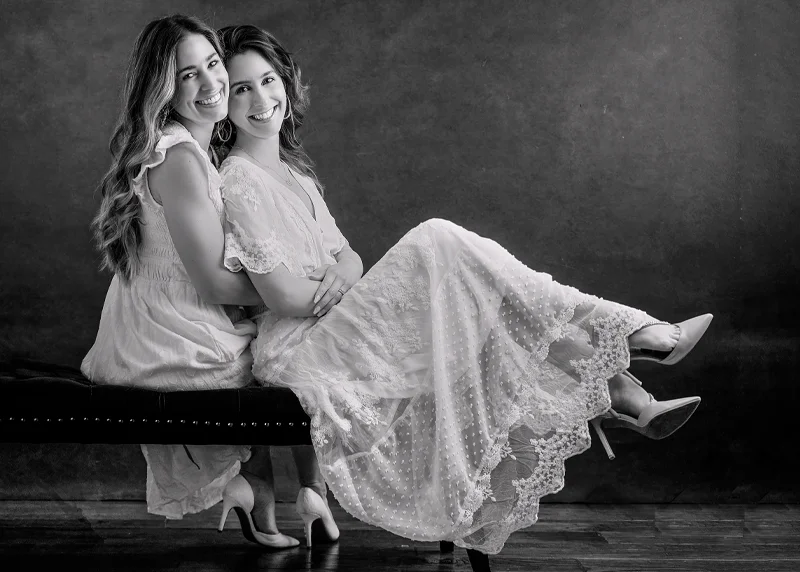Capturing Eternity: The Art of Creating Fine Art Portraits That Transcend Generations
Fine art portraiture is a profound expression of personal heritage, encapsulating the essence of an individual’s legacy within a frame. This art form transcends the mere capture of likenesses, elevating the portrait to a piece of history that speaks across generations. The audience for such a narrative is likely composed of individuals who appreciate the depth of cultural heritage, families seeking to preserve their lineage, and art collectors who value portraiture’s emotional and historical significance. The purpose of this article is to explore the intricate process of creating fine art portraits that are visually stunning, rich in meaning, and capable of enduring the test of time. With an informative and reverent tone, we will delve into the nuances of this timeless art form, guiding potential clients and enthusiasts through the journey of creating a legacy through fine art portraiture.
- The Essence and Definition of Fine Art Portraiture
Fine art portraiture transcends the mere capture of a subject’s likeness, elevating itself to an art form that seeks to defy the passage of time. This genre of photography is not content with simple representation; it endeavors to infuse the photographer’s creative spirit, weaving a narrative and sparking an emotional connection that resonates with the observer.

At its core, fine art portraiture marries the precision of portrait photography with the imaginative flair of fine art, resulting in images that boast authenticity, depth, and aesthetic allure. This fusion gives rise to a piece that holds personal meaning for the individual portrayed while offering artistic value to those who gaze upon it.
The true spirit of fine art portraiture is its ability to narrate a tale or express a sentiment within the confines of a single image. Rather than a mere record of reality, it aspires to shape it, frequently employing inventive lighting, distinctive compositions, and evocative atmospheres to lift the photograph into the artistic sphere. This process is intentional and often collaborative, involving both the photographer and the subject in realizing the final vision.
Fine art portraits are crafted not solely for display but to engage and imprint a lasting memory. They are envisioned as treasures to be held dear and handed down through the ages, transforming significant life moments into enduring works of art. The legacy they create is one of visual heritage, imbuing personal narratives with the gravity of historical importance.
- Characteristics of Fine Art Portraits
Fine art portraits stand out due to a suite of distinctive features that differentiate them from conventional portraiture:
Intentionality is paramount in fine art portraiture; every element, from the subject’s posture to the backdrop details, is deliberately selected to enhance the portrait’s message and impact.
Artistic Expression is evident in the photographer’s stylistic choices, which may include a specific color scheme, textural elements, and the incorporation of symbolic imagery.
Technical Excellence is a cornerstone, with photographers wielding their lighting, exposure, and post-processing expertise to create images that embody artistic perfection.
Emotional Impact is a sought-after effect in fine art portraits, achieved through the subject’s demeanor, the ambiance of the setting, and the photographer’s skill in eliciting an emotive response from the viewer.
Timelessness is a guiding principle, aiming for the portrait to be cherished for generations, unaffected by fleeting trends.
Exclusivity and Uniqueness are assured, as each portrait is a bespoke reflection of the subject’s persona, ensuring no two pieces are alike.
Composition and Posing often draw inspiration from classical art forms, with subjects arranged to exude grace and complement the artistic vision.
Narrative Elements enrich the portrait, inviting viewers to explore the story woven into the visual metaphors, props, or settings.
Attention to Detail is meticulous, with every aspect of the frame—from the subject’s attire to the subtlest of accents—carefully orchestrated to contribute to the portrait’s harmony.
By integrating these elements, fine art portraits attain a level of elegance and profundity that transforms a simple photograph into an heirloom, a testament to the enduring power of visual storytelling.
- Emotional Resonance and Legacy
Beyond the aesthetic allure, fine art portraits hold a profound ability to touch hearts and stir emotions, weaving a narrative that endures through time. This emotional depth transforms a mere image into a cherished legacy that retains its significance as it is handed down from one generation to the next.

The essence of emotional resonance in portraiture is portraying the subject’s spirit beyond mere physical likeness. The intangible qualities—the glint in the eye, the subtle curve of a smile—forge a connection with the observer. These portraits become more than images; they are vessels of memory, evoking a sense of familiarity and shared humanity.
As a portrait journeys through the ages, it assumes the role of a historical document, a testament to the family’s heritage. Its worth transcends the finesse of its creation, lying instead in the narrative it encapsulates—a narrative enriched with each passing year. It is a testament to lineage, a beacon of familial pride, continually breathing life into conversations and reflections of those who cherish it.
In a broader sense, fine art portraits can ascend to the status of cultural treasures. Those that capture pivotal historical figures or moments can profoundly influence our understanding of bygone times, offering a window into the social fabric of earlier societies.
Thus, the legacy of a fine art portrait is dual: intimately personal to those whose histories are entwined with it and collectively significant as a piece of the cultural mosaic. By bridging emotional connections across eras, these portraits create a lineage of sentiment, linking ancestors to their progeny in an unbroken chain of remembrance.
Ultimately, the indelible mark of a fine art portrait is measured by the depth of its emotional resonance—the intricate web of connections it nurtures—and the enduring legacy it weaves, one that outlives the transient and etches itself into the annals of time.
- Creating Timeless Fine Art Portraits
Crafting a fine art portrait that defies the passage of time is an intricate dance of technical prowess, imaginative insight, and a nuanced grasp of the elements that grant a portrait its everlasting charm.

The cornerstone of such a portrait is its composition, a deliberate orchestration of subject, backdrop, and visual elements that guide the observer’s gaze with ease, achieving a sense of equilibrium and grace. Photographers may draw upon time-honored techniques like the rule of thirds or the golden ratio to forge images that resonate with viewers across decades.
The subtleties of lighting are instrumental in bestowing a portrait with a timeless aura. The character of light—its softness, directionality, and hue—can cast a profound influence on the portrait’s ambiance. Mastery in molding light to flatter the subject’s features while encapsulating the desired emotional tone is a testament to a photographer’s expertise and artistic maturity.
The mood of a fine art portrait is a tapestry woven from myriad details, from the setting to the color palette, attire, and accessories. The goal is to capture an emotion or narrative that transcends the moment of capture, allowing the image to maintain its relevance and evoke a response as potent in the future as it was at its creation.
At the helm of this creative voyage is the photographer’s artistic vision, a unique perspective on encapsulating the subject’s story. This vision flourishes through collaboration with the subject, fostering an understanding that enriches the portrait with authenticity and emotional depth.
The pursuit of crafting a timeless fine art portrait is an intentional act of creation, where each artistic choice is made with the legacy in mind—a legacy that will be treasured for its enduring beauty, emotional resonance, and timeless appeal. It is through this meticulous process that a portrait is endowed with the ability to become an heirloom, cherished by generations to come.
- Composition, Lighting, and Mood
At the heart of fine art portraiture lies the harmonious blend of composition, lighting, and mood—three elements that, when combined with skill, breathe life into a photograph. The composition is the visual pathway, leading the observer’s gaze through the tableau. The thoughtful arrangement of the subject, the interplay of shapes, and the strategic use of space create a visual rhythm, drawing the viewer into the portrait’s narrative.

Consider the impact of negative space, which, when used effectively, can lend a sense of solitude or introspection to the image. Similarly, the deliberate placement of the subject can either anchor them within their environment or create a dynamic tension within the frame.
Lighting, on the other hand, is the sculptor’s chisel in a photographer’s toolkit. It molds the subject, carving out shadows and highlights to reveal the contours of a story. The character of the light—be it the ethereal glow of dawn or the starkness of a single bulb—can transform the atmosphere of a portrait, guiding the emotional tone the artist wishes to convey.
The mood is the ephemeral quality that cloaks the portrait, an ambiance that can whisper of melancholy, sing of joy, or roar with intensity. It is an alchemy of elements: the subject’s demeanor, the color scheme, and the setting all contribute to this emotional landscape. For instance, a portrait steeped in cool hues and bathed in diffuse light may evoke tranquility, while one cast in warm, vibrant shades under stark lighting could suggest vitality and passion.
The interplay of these elements is a dance, with each step—the placement of a hand, the fall of a shadow, the choice of a hue—crafted to complement and enhance the portrait’s narrative. When these components align under the photographer’s deft touch, the result is a portrait that resonates with viewers across time, inviting them to experience the depth of its story.
- Photographer’s Artistic Vision and Collaboration
The soul of a fine art portrait is often found in the photographer’s artistic vision—a unique perspective shaped by personal experiences, creative influences, and the desire to convey a deeper meaning. This vision manifests as a distinct visual signature, a thread that weaves through their work, offering a glimpse into the artist’s inner world.
A photographer’s style might be recognized through a signature palette or a penchant for certain textures, creating a cohesive body of work that is unmistakably theirs. This consistency is not just aesthetic but a narrative language that speaks of the artist’s journey and perspective.
Yet, creating a fine art portrait is not a solitary endeavor. It thrives on the dynamic interplay between photographer and subject. This partnership is the crucible in which the portrait is formed, with trust and open dialogue as its foundation. Through this rapport, the photographer can delve into the subject’s persona, capturing not just an image but the essence of who they are.
The subject’s input is invaluable, infusing the portrait with their essence and narrative. Their stories and visions meld with the photographer’s artistry, layering the portrait with complexity and richness. It is this confluence of visions that elevates the portrait beyond a mere likeness, transforming it into a collaborative masterpiece.
The synthesis of the photographer’s vision with the subject’s individuality results in a portrait that transcends the ordinary. It becomes an artistic statement, a visual poem that encapsulates the intangible qualities that will define its enduring legacy.
- The Investment in Fine Art Portraits
Embarking on the journey of acquiring fine art portraits transcends the boundaries of a typical financial transaction. It is a commitment to the enduring preservation of personal narratives and familial heritage. The monetary aspect of fine art portraits is a testament to the exceptional craftsmanship of the photographer, the superior quality of materials, and the intricate process from conception to the final stroke of refinement. Patrons are not merely purchasing a photograph; they are endowing an artist with the trust to encapsulate a unique narrative through their lens.

The emotional stakes are equally profound. These portraits are imbued with the aspiration to endure to be cherished by successive generations. The creation process often prompts profound introspection and a quest for significance as individuals seek to immortalize their lineage, identity, or the profound bonds they share.
The selection of a photographer, as previously explored, is pivotal in this venture. It is imperative for clients to resonate with the photographer’s creative vision and methodology to ensure that the resulting portraits are a true reflection of their aspirations. A harmonious synergy between the artist’s style and the client’s expectations lays the groundwork for a masterpiece that will be treasured for its sentimental worth as much as its aesthetic appeal.
Fine art portraits represent an intersection of luxury and a declaration of one’s values. Those considering such an investment are encouraged to look beyond the initial expenditure to the enduring legacy that these portraits will embody for generations to come.
Financial and Emotional Considerations
The decision to commission fine art portraits is a multifaceted one, with financial and emotional dimensions. From a monetary perspective, the investment mirrors the confluence of the artist’s acumen, the personalized nature of the service, the dedicated time for preparation and execution, meticulous post-production, and the caliber of materials for the final presentation. This genre of photography is an investment in an enduring artifact that transcends mere visual appeal to embody profound sentimental value.
On an emotional level, the investment is deeply personal. The act of commissioning a portrait often entails a journey into one’s innermost reflections a willingness to engage emotionally with the process, as individuals seek to have their stories and emotions immortalized through art. These portraits are not just images; they are celebrations of life’s pivotal moments, legacies, and personal journeys, charged with emotional depth and significance.
The process of acquiring a fine art portrait is an intimate collaboration that culminates in a piece as cherished for its emotional resonance as for its visual beauty. Clients are encouraged to consider their preparedness for the financial commitment and the emotional depth that such portraiture demands.
Ultimately, the value of fine art portraits lies in their power to evoke and preserve memories, serving as a conduit between generations. Clients are invited to view these portraits not just as photographs but as emotional legacies, rich with personal history and timeless in their capacity to capture the essence of their subjects.
- Selecting the Right Photographer
Embarking on the journey of fine art portraiture is a commitment to creating something extraordinary. The photographer you choose plays a pivotal role in this creative venture. Look for an artist whose technical expertise is matched by a distinctive artistic flair that echoes your vision.

Examine the photographer’s portfolio with a discerning eye. It should not only speak to you aesthetically but also exhibit a consistent standard of excellence. This consistency is a testament to the photographer’s ability to deliver exceptional results with every project.
Expertise in fine art portraiture is non-negotiable. A photographer seasoned in this field brings a nuanced understanding of the art form’s subtleties, ensuring your portrait transcends the ordinary.
The synergy between photographer and client is foundational. Seek out a professional who is not just a listener but a collaborator, someone who can translate your ideas into a compelling visual narrative. The intimacy of the portrait process demands a photographer who can foster a sense of ease and trust.
Investigate their professional standing through testimonials and client feedback. These insights can shed light on the photographer’s work ethic and the nature of the partnership you can anticipate.
In essence, the right photographer is one who harmonizes artistic expression, technical skill, and a spirit of cooperation. This individual will not merely capture an image but will contribute to the tapestry of your family’s legacy.
- Materiality, Presentation, and Preservation
The tangible elements of fine art portraits are critical to their endurance and aesthetic appeal. Making informed choices regarding materials, how the portrait is showcased, and its upkeep is essential for its lasting significance.
The selection of materials is paramount. Opt for archival-quality paper that resists aging or a canvas that adds depth and character to the piece. Inks and pigments should be chosen for their durability and fade resistance, ensuring the portrait’s vibrancy for years to come.
The art of presentation enhances and safeguards your portrait. A frame that aesthetically complements the piece while offering protection is ideal. Consider UV-filtering glass to mitigate the effects of sunlight, and ensure that any matting is acid-free to prevent damage to the portrait’s surface.
Preservation is an ongoing commitment to the portrait’s care. Guidance on optimal display conditions, such as avoiding direct sunlight and maintaining a consistent humidity level, is crucial. Gentle cleaning practices will contribute to the artwork’s longevity.
By prioritizing these aspects, clients are empowered to make choices that not only celebrate but also protect their investment. Such diligence in materiality, presentation, and preservation is what solidifies the portrait’s role as a cherished heirloom.
- Archival Quality and Framing
When we speak of archival quality in the context of fine art portraiture, we’re referring to the use of materials and processes designed to protect and preserve the artwork for as long as possible. Selecting the right papers, canvases, inks, and protective coatings is paramount, as these components must be resistant to the elements that typically cause artwork to fade, discolor, or physically deteriorate. Many of these materials undergo rigorous testing to ensure they can endure for a century or more when kept in ideal conditions.
The framing of a fine art portrait is not just a matter of aesthetic preference but a crucial protective measure. A frame that meets archival standards will include acid-free matting, which acts as a barrier against any potential acid migration from the frame materials. Additionally, glass or acrylic with UV protection is essential to shield the portrait from harmful ultraviolet rays. However, it’s worth noting that while UV filtering is beneficial, it cannot completely eliminate the risk of damage from direct sunlight.
The frame’s construction should be robust, with a seal that prevents dust, pollutants, and moisture from entering, as these can all contribute to the portrait’s deterioration. A well-crafted frame does more than just complement the visual appeal of the portrait; it plays a significant role in its long-term preservation.
For a fine art portrait to truly stand as a lasting heirloom, every material in direct contact with it must conform to archival standards. This commitment to quality ensures that the portrait remains a testament to the subject’s legacy, enduring through the years.
- Care and Environmental Considerations
The longevity of fine art portraits is heavily influenced by their care and the environment in which they are displayed. Factors such as lighting, climate, and air quality play significant roles in the life span of these precious pieces.
It is recommended to position portraits away from direct sunlight to mitigate light damage despite the use of UV-protective glazing. Even artificial lighting should be scrutinized; opting for LED lights can be a wise choice due to their minimal UV radiation output.
Consistency in temperature and humidity within the display environment is equally crucial. Fluctuations can cause the portrait’s canvas or paper to expand and contract, leading to damage over time. Aim for stable temperature and humidity levels within the ideal range of 40-60% to prevent such issues.
The air surrounding the portrait should be clean and free of pollutants like smoke or chemical vapors, which can accelerate degradation. Ensuring good ventilation and keeping the portrait away from potential indoor pollutants is advisable.
Routine maintenance, including the gentle removal of dust from the portrait and frame, is essential. Employing soft, lint-free cloths or brushes will help avoid surface damage. When handling the artwork, wearing gloves can prevent the transfer of oils from the skin to the portrait or frame.
By educating clients on these care and environmental considerations, we can empower them to protect their investments and ensure that their fine art portraits remain a source of pride and joy for generations to come.
- Passing Down the Legacy
A fine art portrait is more than a mere depiction; it is a vessel of heritage, bridging the past to the future. These portraits embody the essence of our forebears, capturing the narratives of bygone eras.

To ensure these treasures are cherished through the ages, it’s essential to contextualize them with their stories. We advise clients to accompany each portrait with a written account or an audio recording that delves into the identity of the person immortalized, the significance of the occasion, and any anecdotes that might enrich the portrait’s legacy.
Navigating the legalities of bequeathing such art is equally crucial. Clients must be well-versed in the nuances of ownership transfer, copyright laws, and reproduction rights. By incorporating the portrait into one’s estate plans, its passage to subsequent generations can be orchestrated thoughtfully, reflecting the original owner’s intentions.
The portrait’s emotional resonance is amplified when it becomes interwoven with family lore. As these stories are shared, they endow the artwork with a sentimental value that transcends its visual beauty. This emotional dimension is indispensable, fostering a bond that each new generation will hold dear.
Thoughtful preparation for the portrait’s future ensures that its significance, both as an emotional touchstone and a historical artifact, is preserved. This foresight guarantees that the portrait remains a source of pride and reflection for years to come.
- Stories and Memories
Beyond their visual splendor, fine art portraits are vessels of familial lore, anchoring future generations to their roots. These images become more poignant when accompanied by the rich tapestry of personal narratives and historical context.
We encourage clients to augment their portraits with a ‘legacy kit’—a collection of written memoirs, cherished keepsakes, or even voice recordings that illuminate the life and times of the portrait’s subject. This could take the form of a beautifully crafted memory box or a secure digital repository, ensuring that the essence of the individual is captured in full.
Incorporating these portraits into family rituals can be a powerful way to reinforce bonds and pass down traditions. As stories are recounted in the glow of the portrait, it become a symbol of the family’s enduring narrative, with each retelling adding depth to the shared history.
By intertwining these narratives with the physical artwork, clients craft a living legacy, one that continues to grow and inspire as it is handed down through the generations.
- Legal and Ethical Rights
Navigating the legal and ethical landscape of fine art portraiture is essential for photographers and patrons alike, ensuring the art’s integrity and rightful dissemination across generations. The moment a portrait is captured, copyright protection takes effect, bestowing upon the photographer a suite of exclusive rights, including the display, reproduction, and distribution of the image.
Clients, on the other hand, can negotiate specific usage rights through tailored agreements or licenses, granting them the liberty to replicate or exhibit the portrait within the confines of the agreed-upon conditions, all while honoring the creator’s legal entitlements.
As clients contemplate the future of their portraits, it becomes imperative to integrate considerations of copyright and reproduction rights into their estate planning. By doing so, they can set forth clear directives on the utilization and sharing of the portraits after they have passed.
Privacy considerations also come into play. The subjects of the portraits, or their heirs, may assert privacy rights, which must be weighed against the artistic and historical value of the work. Photographers are wise to obtain model releases, particularly when a portrait might be displayed publicly or reproduced beyond the realm of personal enjoyment.
Ethical concerns extend to the manner in which the subject of the portrait is depicted, ensuring they are treated with the utmost respect and dignity. This encompasses the ways in which the photograph is shared and presented, safeguarding the subject’s legacy and esteem.
In conclusion, the tapestry of legal and ethical issues is intricate yet pivotal in honoring the subject’s image and the photographer’s creative output. Such considerations are the bedrock of preserving the fine art portrait’s legacy with the respect it deserves.


